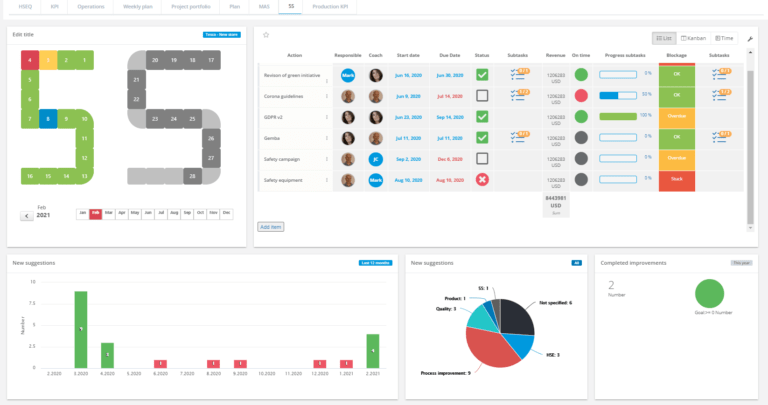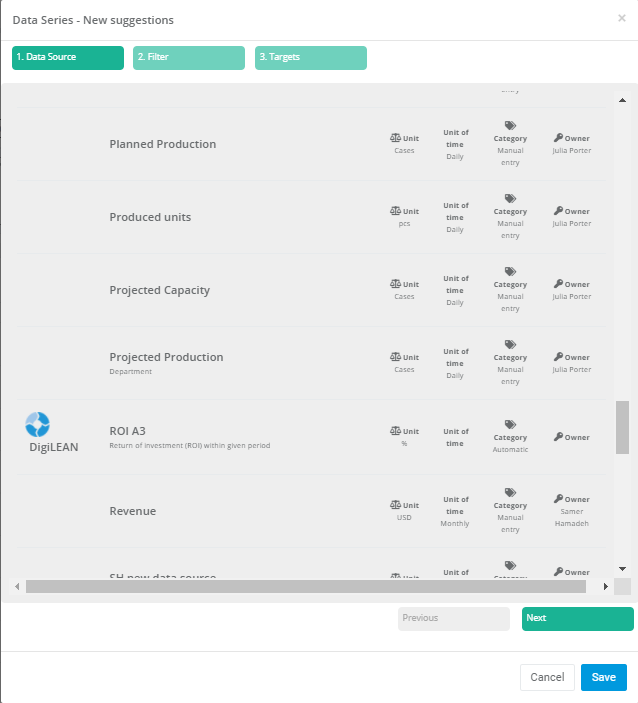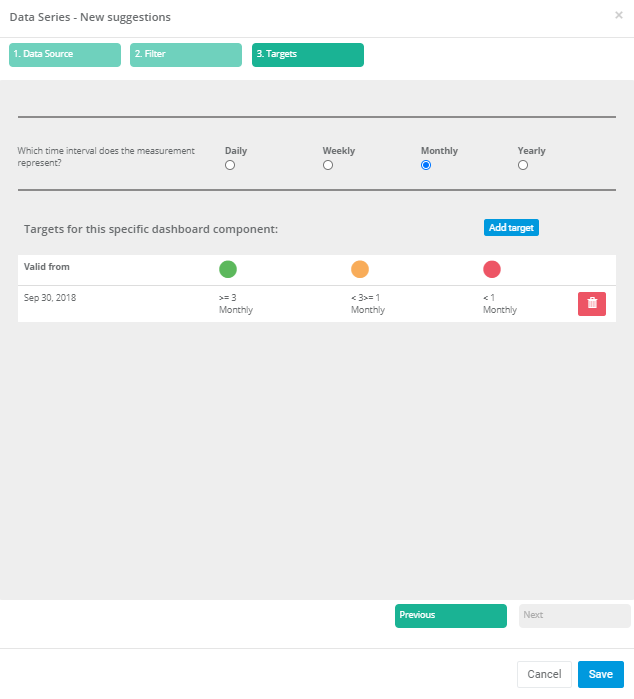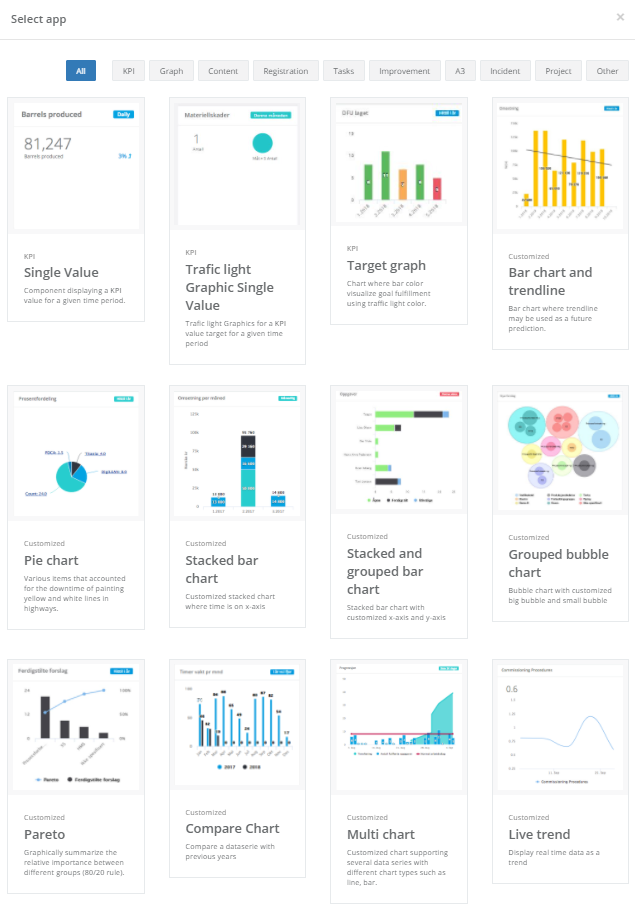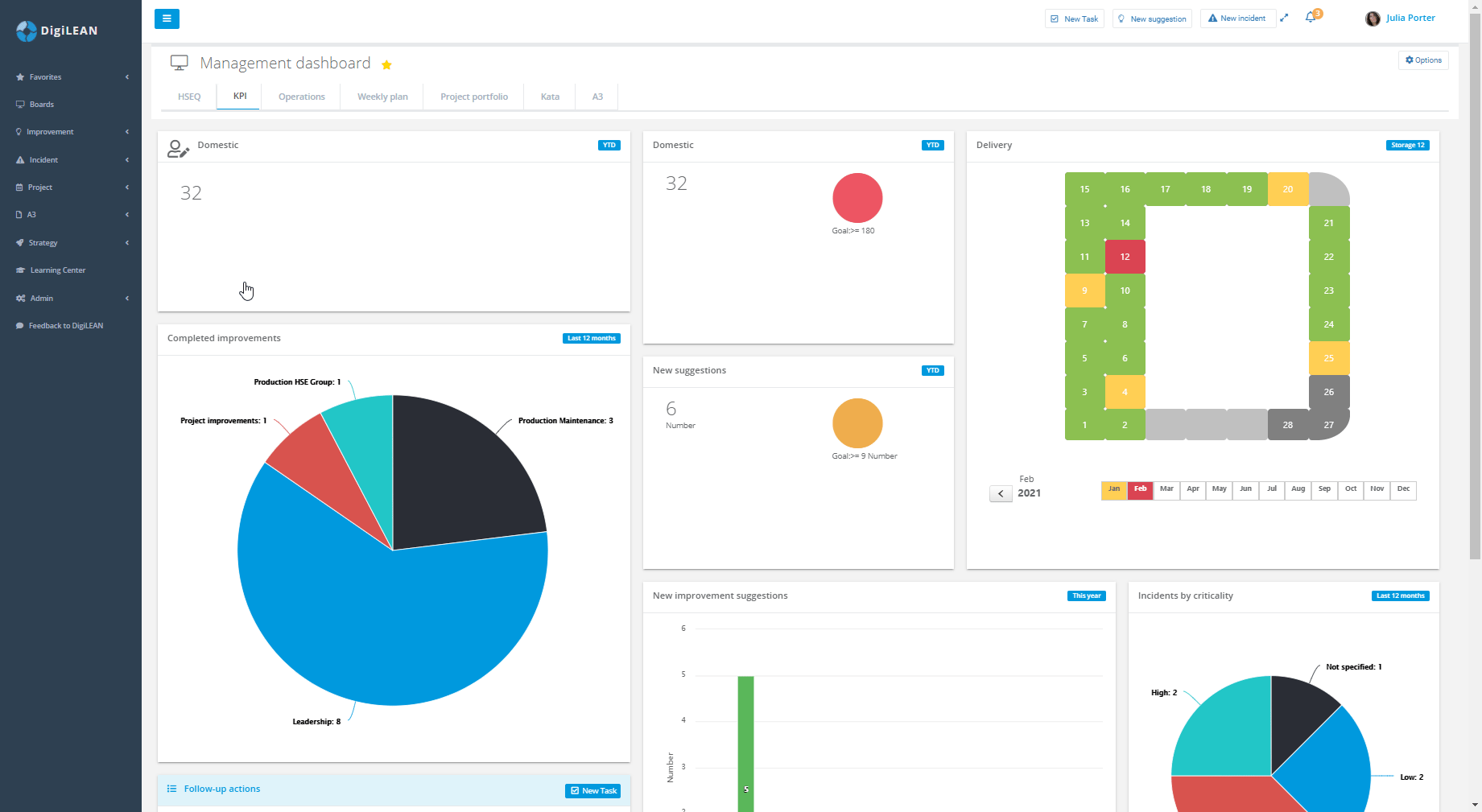- Product
Interactive boards. Fully customizable.
Capture, prioritize and follow up improvements.
Report and manage incidents. Visualize reports and statistics.
Operationalize your strategies and integrate your whole organization.
Access your tools in Microsoft Teams.
Customized templates. Problem solving, business development etc.
Manage project individually or in portfolios with visual and interactive tools.
Create and share best practices, one-point-lectures and standards.
Easy access to tasks, improvements and incidents.
Integrate DigiLEAN with your existing IT systems.
Meeting the demand of larger organizations.
High security level by default.
In less than 4 min
- Use Cases
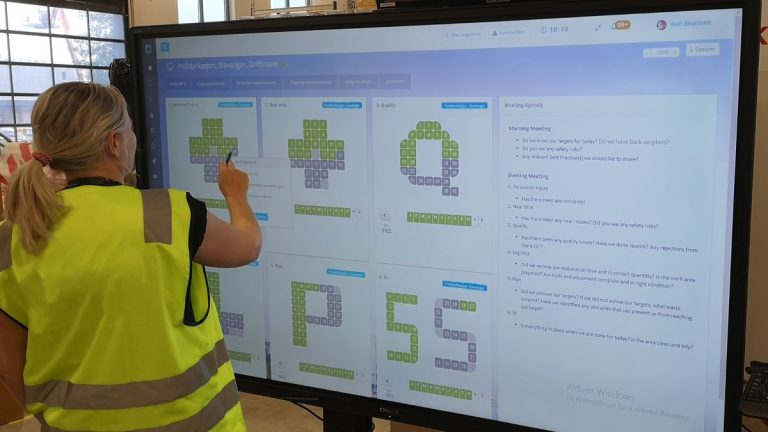
Interactive tools for both shop floor and administration.
Visual project management.
Maintain standards. Manage incidents and discrepancies.
Manage tasks, integrate with problem-solving and continuous improvement.
Lean daily management tailored for healthcare.
Team task management, problem-solving and visualization.Case management, improvements, problem-solving, and strategy alignment.We have a LEAN solution for you too. Just ask!
We meet the demand of larger organizations.
- Pricing
- Shop Floor
- Product
Interactive boards. Fully customizable.
Capture, prioritize and follow up improvements.
Report and manage incidents. Visualize reports and statistics.
Operationalize your strategies and integrate your whole organization.
Access your tools in Microsoft Teams.
Customized templates. Problem solving, business development etc.
Manage project individually or in portfolios with visual and interactive tools.
Create and share best practices, one-point-lectures and standards.
Easy access to tasks, improvements and incidents.
Integrate DigiLEAN with your existing IT systems.
Meeting the demand of larger organizations.
High security level by default.
In less than 4 min
- Use Cases

Interactive tools for both shop floor and administration.
Visual project management.
Maintain standards. Manage incidents and discrepancies.
Manage tasks, integrate with problem-solving and continuous improvement.
Lean daily management tailored for healthcare.
Team task management, problem-solving and visualization.Case management, improvements, problem-solving, and strategy alignment.We have a LEAN solution for you too. Just ask!
We meet the demand of larger organizations.
- Pricing
- Shop Floor
Visual performance management with digital boards
Traditional lean boards are widely used as visual performance management, but require a lot of time and attention to keep up-to-date. Outdated boards results in unproductive team meetings.
Visual performance management with DigiLEAN adds transparency to your operation. Use less effort to keep your boards up-to-date. It allows for a better workflow combining KPIs and dynamic action lists.
Elements of visual performance management
Kanban
Kanban is the most common visualization tool. A kanban board visualize your activities. Move the activities across the columns from left to right to drive progress from start to finish. Each column represents a status, and the workflow is easily customized.
Time based activity management
Where kanban boards focus on processes, time boards and weekly boards focus on time. Depending on your pace of operations, use a time board with a mohtly or annual perspective, or a weekly board.
Key performance indicators
Key performance measurements are metrics telling you where you are on the path to hit your targets. Visual management is all about “status at a glance”. Looking quickly at the board should intuitively tell you how well you are performing; Good, bad or somewhere in between that needs attention.
A good example are the traffic light indication giving you green light, amber or red light. These traffic lights are used to indicate custom indicators.
A good example are the traffic light indication giving you green light, amber or red light.
Moving beyond the KPI state, add numbers to quantify the status. How far away from targets are we? And how much further do we need to go?
Statistical graphs, numeric values combined with traffic light colors gives you the extra level of information.
Other visual performance indicators
Many start their lean journey implementing a 5S standard. It’s about improving, sorting and standardizing your work place to increase workflow and reduce non-productive-time.
Often the 5S standard degrade without continuous attention. This is a good example where visualization really helps keep the attention to the 5S. Embracing visualization gives you engaged and committed employees.
The benefits of digital boards
Visualizing your daily activities and goals has a huge effect on your performance. It does, however, require regular usage. If it’s part of the daily agenda, it’s part of the employees’ mindset. Repetition and continued focus is a key part of change processes and building a culture.
Use the built-in designer tool to customize your boards and make them relevant. The dashboards offer a large range of apps to use. Some apps visualize KPIs while other are interactive. Interactive apps, such as 5S or green cross let you report status directly on the boards.
Define your KPIs easily.
Define your KPIs in DigiLEAN. One way to use it is to update KPIs directly from the board. Another way it is to visualize external data such as Excel or any integrated 3rd party system.
Define and refine your targets.
Add your periodical targets for each mesurement. This is being used in visualization apps where green, yellow and red are applied automatically according to your target settings for that KPI.
Display KPIs the way you want.
The selected app decides how you want to visualize data. Connect each app to a measurement and the board will always display updated values.
Combine different presentations with filters and sorting to create a more nuanced insight for your team.
Data registration directly on a board or integrate with 3rd party system.
Don’t let digital boards be eye-candy only. Stay interactive with your team and the boards. Our data registration apps lets you report performance measurements on the board. Any visual representation of the measurement updates in realtime.
Getting data through an integration with a 3rd party system gives you the visualization offered by DigiLEAN.
So what do you achieve with DigiLEAN?
- Added transparency. Overall targets are broken down to relevant targets for your teams.
- Visualization creates attention amongst your workforce.
- Employees will attempt to affect the performance in the way they can.
- A better communication and collaboration context.
- Reliable information with less effort.
© 2025 DigiLEAN AS

